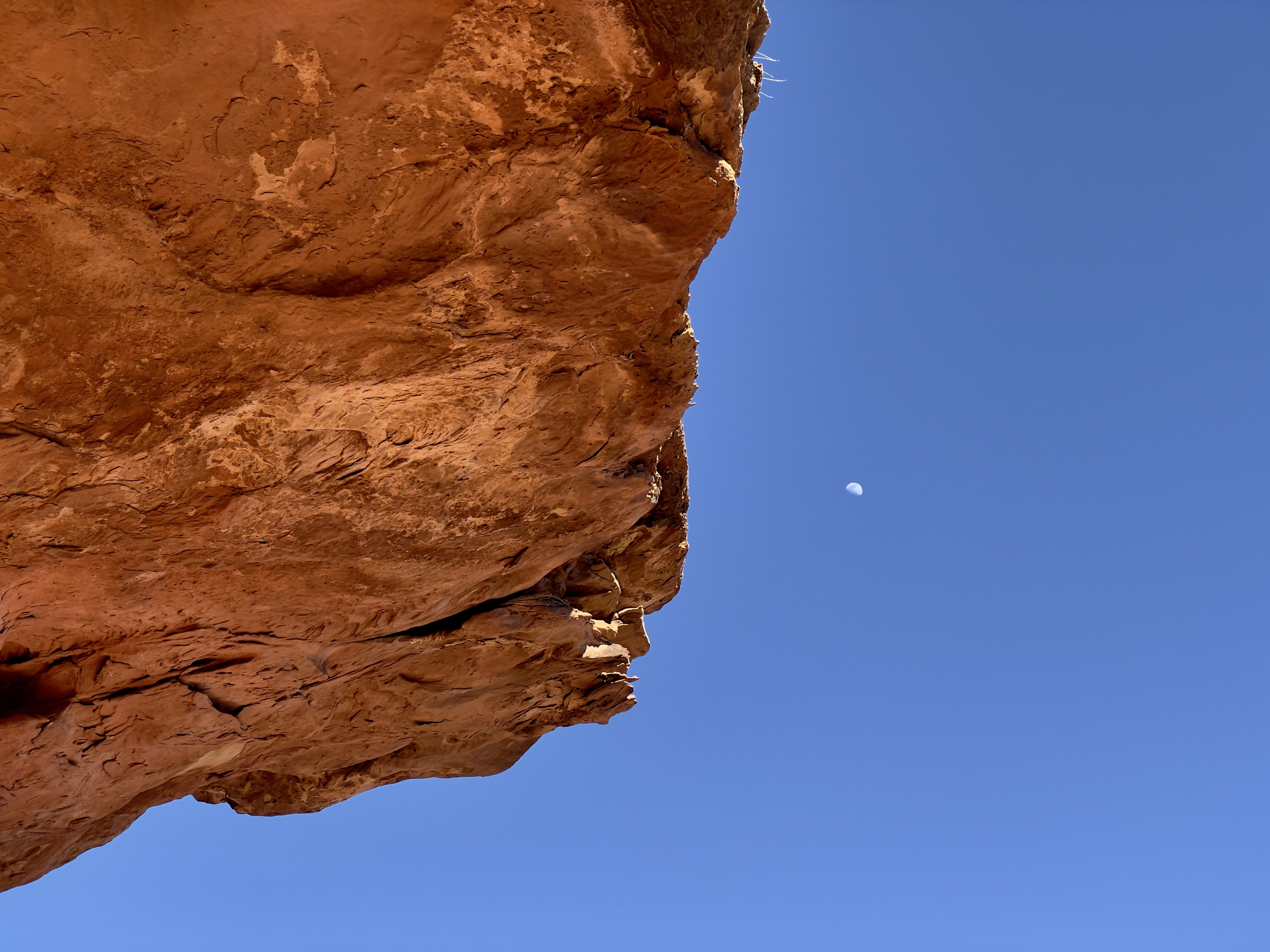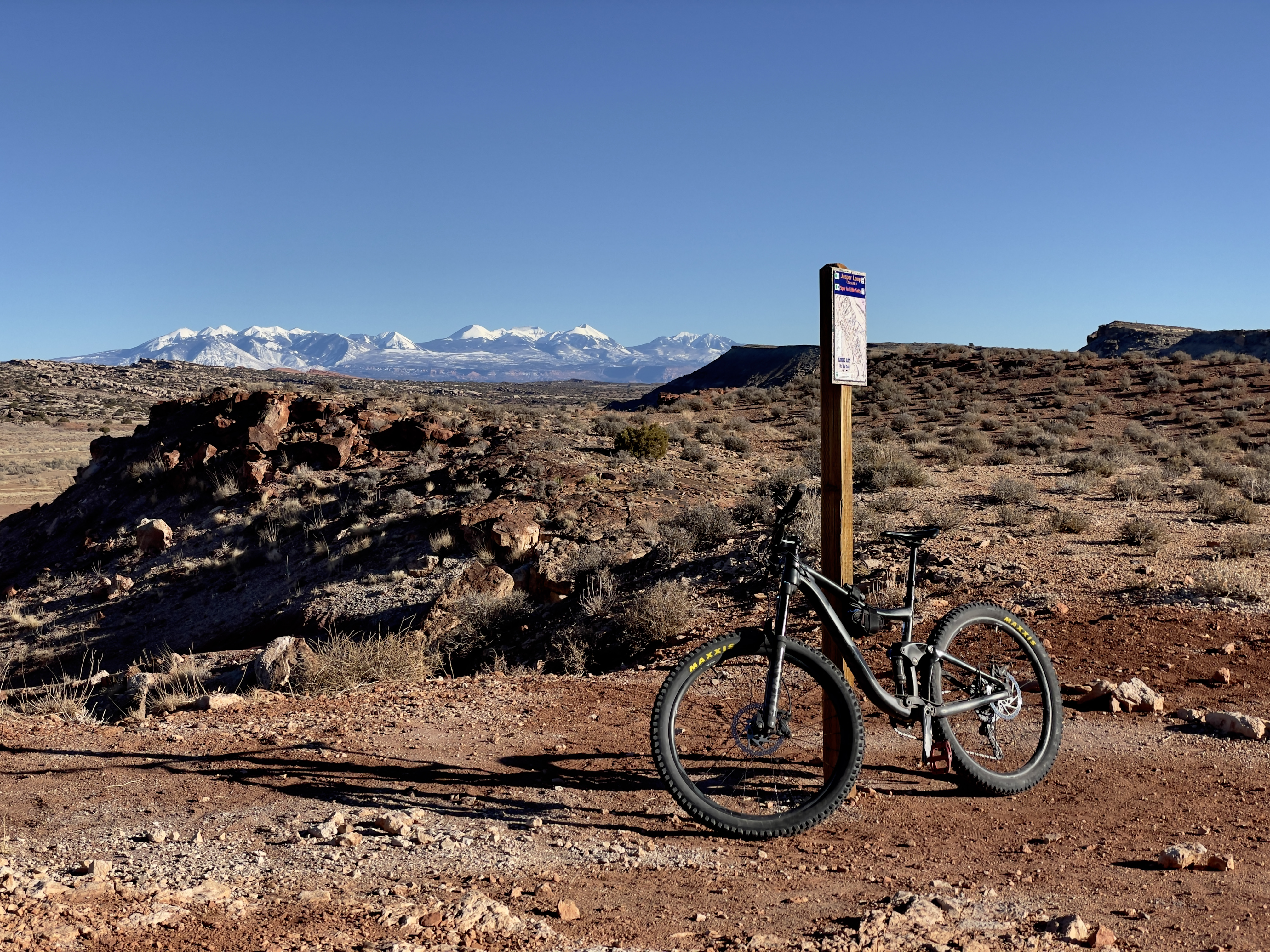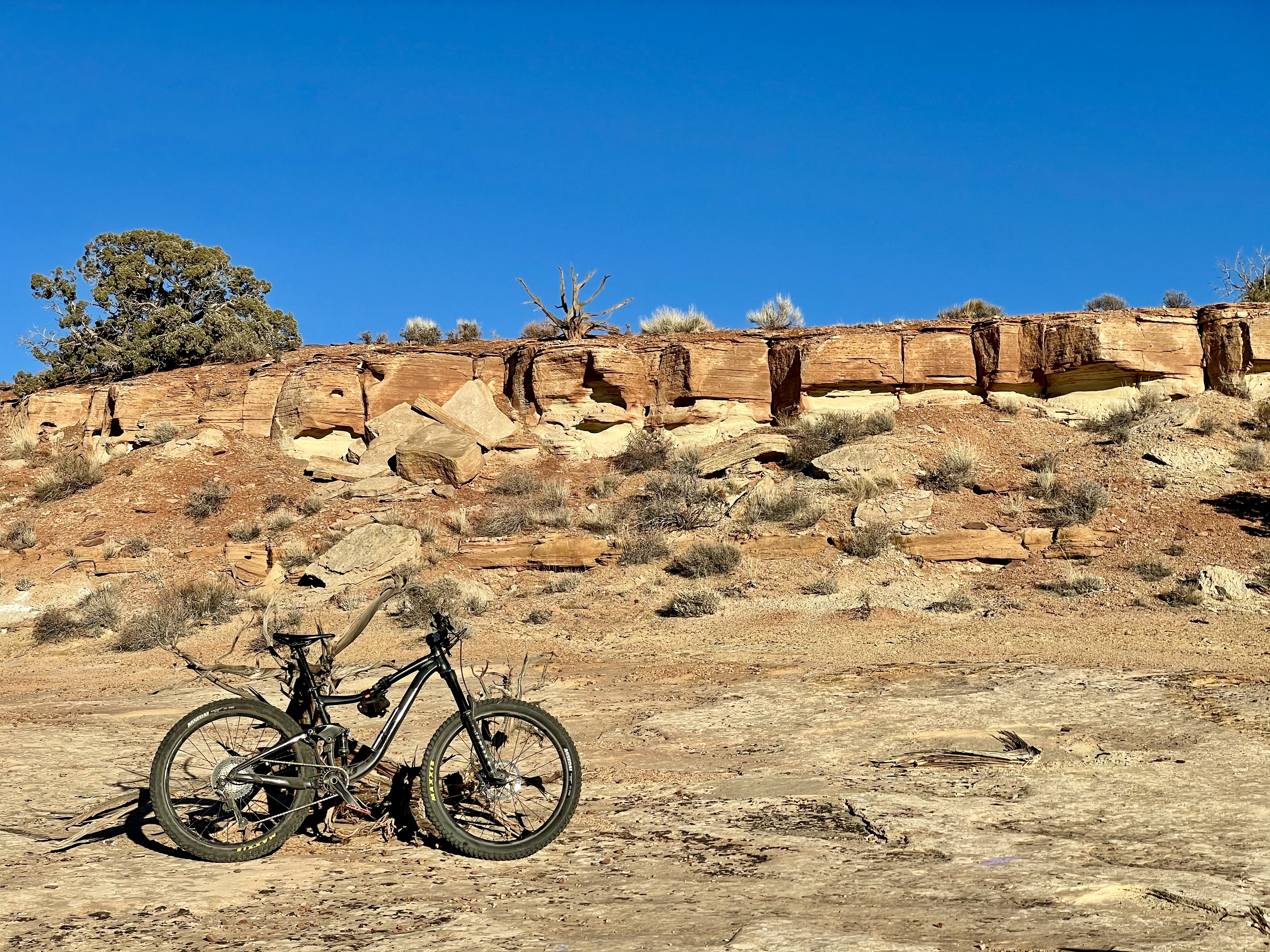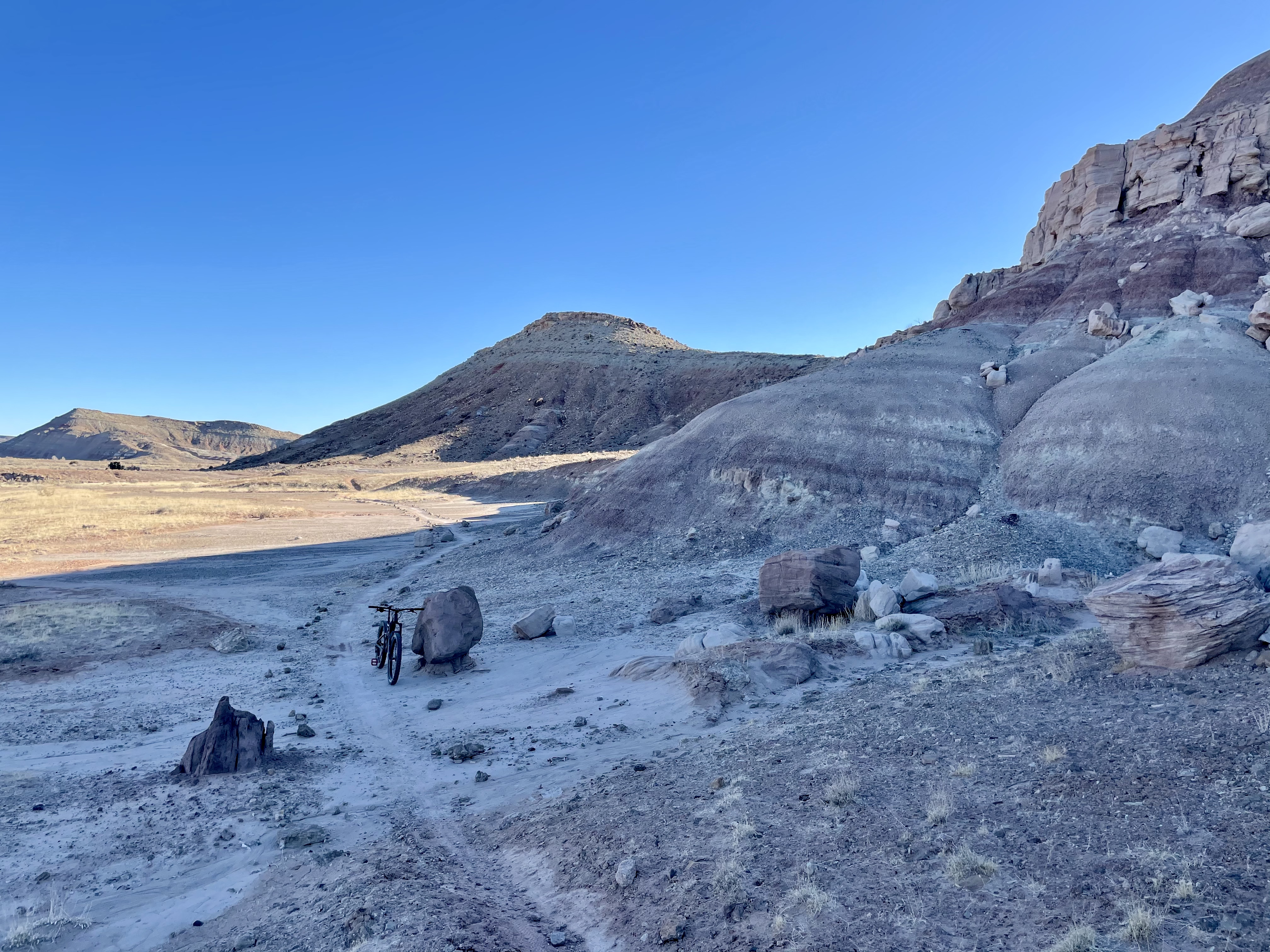Why didn’t somebody tell me about Klondike Bluffs sooner?

The moon as seen from underneath the rock that gives a nearby trail its name: UFO. To me, it is not as UFO-like as rocks I have seen in Arches, but it certainly has the “suspended in midair” part down. Carter Pape, licensed for exclusive use
A quick drive north out of Moab exposes you to a variety of the geographic formations and eccentricities that the area offers. Much of Moab is red because its iron-filled sandstones have oxidized, i.e. rusted, over time. These reds are among the sights to see in the area just north of the entrance to Arches National Park.
Further north, after the intersection of Highway 191 and Highway 313, green rock also appears. I have always felt that the green hue is akin to that of the Statue of Liberty, the patina of which is the result of the copper rusting.
Wouldn’t it be convenient to explain the greenness of those rocks by saying they contain copper? It would sure be easier to understand. However, that is not the case.

Among the harder trails in Klondike is Instep, a short section that bogged me down in sand deeper than I was bargaining for. Carter Pape, licensed for exclusive use
The recurring explanation I have seen for why some rocks, like those north of Moab, become green is that they have iron in them. As someone whose father has a doctorate in physics and loved studying physics in school, it is confusing to me that iron-filled rocks usually turn red but sometimes turn green.
However, it seems that this really is the case. To grossly oversimplify the matter, iron turns red when it sits exposed to air for a long time and green when it sits exposed to water for a long time.
That seems to explain why some rocks in Moab are red while others are green; the red rocks are the result of iron rusting in the air while the green ones are the result of rusting underwater.

There are easier sections of Klondike, as well. The Juniper trails in the northeast part have great views and are very flowy. Carter Pape, licensed for exclusive use
This is the backstory of Klondike Bluffs. Much of the rides take bikers and hikers over the usual (or anything but usual) red terrain that is familar from other Moab areas. But some of the trails pass by large deposits of strikingly green rocks.
Specifically, the trail Jurassic follows a cliffside that includes some of these green deposits. If you have ever wanted to see those green rocks up close, this is the trail to follow.
The green rocks are just one of the many, interesting features you can see in Klondike Bluffs. Another trail further west of Jurassic, named UFO, passes a balanced rock that gives the trail its namesake. Located just off the trail, it is worth a pause for appreciation. Standing under the UFO is a stark reminder of the shear power intrinsic in these formations.
It’s also a reminder of their fragility. Early in my time living in Moab, I learned about the Goblet of Venus, a smaller-scale balanced rock formation near Natural Bridges National Monument that humans toppled in June 1948. Despite assistance from federal prosecutors and the Federal Bureau of Investigation, the culprits were never found.

These blocky ridges also appear next to the UFO trail. They look like a nice place to sit for lunch. Carter Pape, licensed for exclusive use
That’s the story I sometimes think about when biking areas like Klondike Bluffs. These areas are just outdoor museums, and they ought to be treated as such.
There is a sign at the south parking area of Klondike Bluffs that reminds visitors that it is a crime to remove or damage fossils and dinosaur tracks. Juxtapose that with the popularity of Klondike as a biking area and the number of people who pass through it each year.
Like many trails in Moab, those in Klondike are buffered by cryptobiotic soil, and it is some of the cleanest crypto that I have seen in Moab. In one spot on the trail Little Salty, pristine crypto sits mere feet away, downslope no less, from the trail. Elsewhere along the trail, bike tracks break the surface like footprints in a fresh field of snow, but to much more permanent and damaging effect.
Yet by happenstance, this small field of crypto right alongside the path remains apparently long untouched. If only such were true of the many fossils, footprints, balanced rocks, and other features in this vast, outdoor exhibit we call home.

This is the view from Jurassic, the trail that bounds the Klondike Bluffs area from the southwest. It passes the deposits of green rusted rocks and open fields scattered with quartz. Carter Pape, licensed for exclusive use